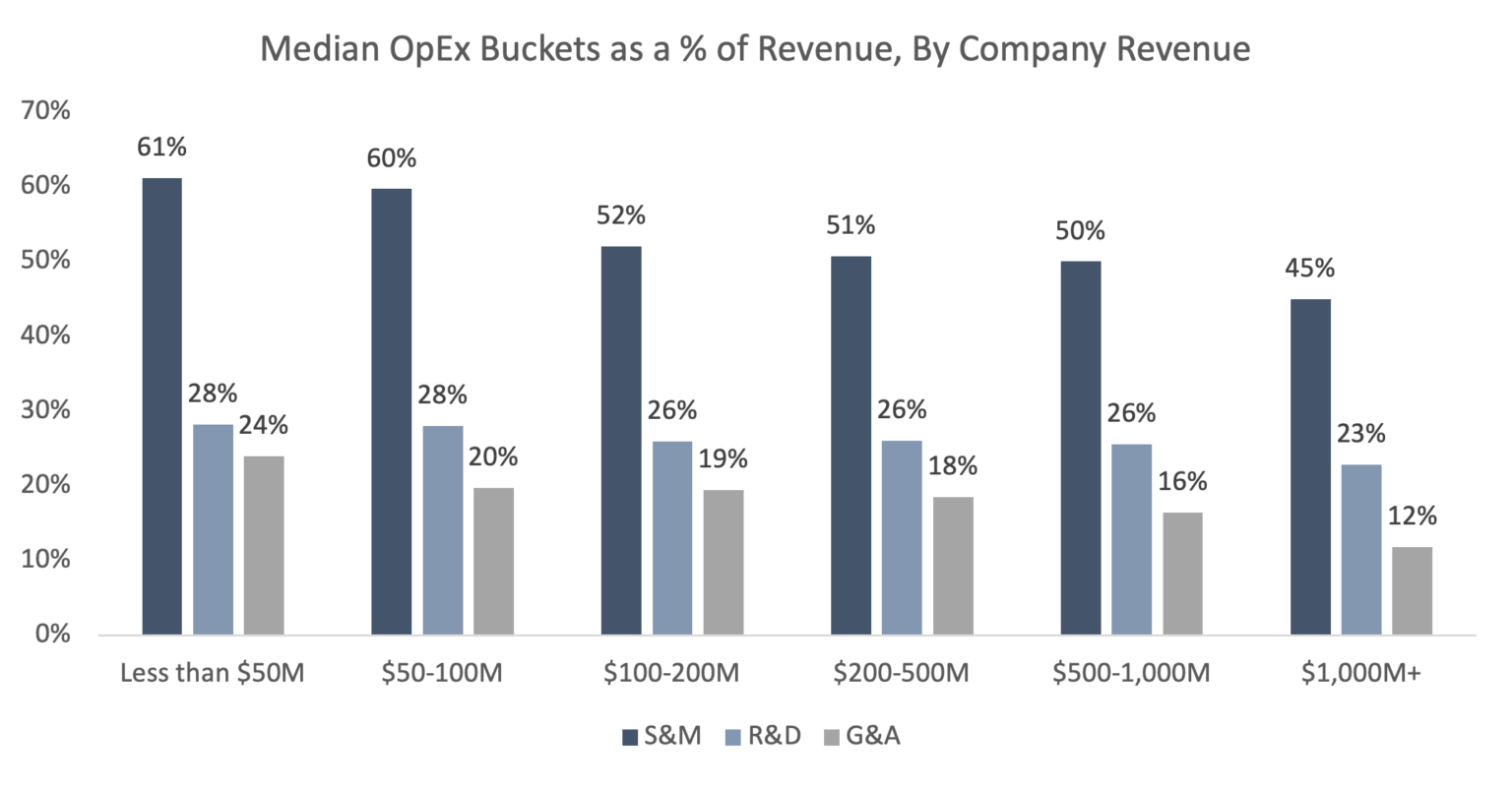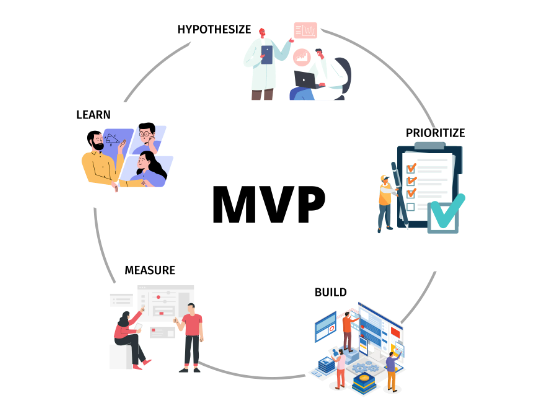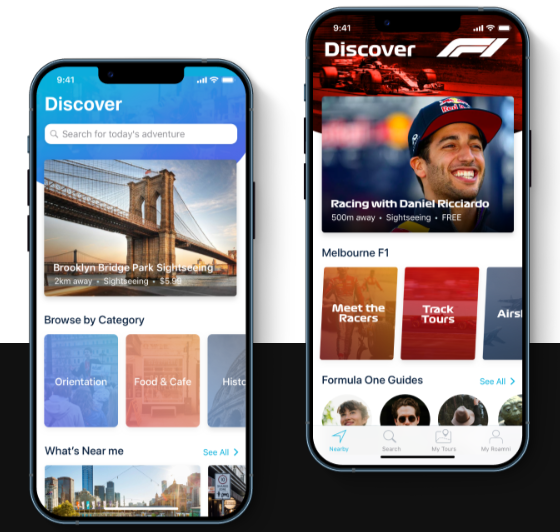SaaS Development Basics: 7 Steps to Building Top-Notch SaaS Apps
In today’s digital age, SaaS has become one of software companies’ most popular and lucrative business models. Everyone wants a slice of the SaaS pie, from small startups to large enterprises.
The estimated value of the software as a service (SaaS) market in 2023 is around 197 billion U.S. dollars, with projections indicating it will reach 232 billion U.S. dollars by 2024.
While no specific data is available on the profitability of SaaS products, a report by Sapphire Ventures suggests that operating margin is a good indicator of a SaaS company’s ability to generate cash over the long term.

Source: Sapphire Ventures
However, building a successful SaaS application is not a cakewalk. It requires a solid understanding of the fundamentals, a well-defined development process, and a clear end-product vision.
In this blog, I’ll discuss the essential steps to building top-notch SaaS applications. Whether you’re a seasoned developer or just starting in the world of SaaS, this guide will provide valuable insights on how you can make SaaS development a success.
So, fasten your seatbelts and prepare for an exciting journey into the world of SaaS development!
But first…
What is a SaaS app?
SaaS stands for “Software as a Service.” A SaaS application is software provided to users over the internet, typically on a subscription basis. The software is hosted on a cloud server and made accessible to customers through a web browser or mobile application.
If you have used Google Docs, you likely know how SaaS works. Unlike the traditional desktop version of Microsoft Word, Google Docs doesn’t necessarily have to be installed on a local device. Users can create, access, and collaborate documents on any device with the internet.
Examples of SaaS products
SaaS applications can range from simple productivity tools like project management software and quoting software for contractors to more complex enterprise solutions like customer relationship management CRM software or human resources (HR) management systems. Some popular examples are Google Workspace, Slack, Dropbox, and Zoom.
On a practical note, for businesses looking to get started with Google Workspace, using a Google Workspace promo code can provide valuable discounts, making it easier and more affordable to access a full suite of productivity tools.
What are the benefits of using SaaS?
- Accessibility. SaaS applications are accessible from anywhere with an internet connection. The provider can update and maintain them without the need for the user to install or manage any software locally.
- Cost savings. SaaS eliminates the need for organizations to purchase and maintain costly hardware and software infrastructure, as the software is hosted on the provider’s servers and accessed over the internet.
- Scalability. SaaS applications are highly scalable, meaning they can easily grow or shrink as needed to meet the changing needs of organizations. This makes it easy for businesses to add or remove users, storage, or other resources as needed.
- Lower IT overhead. With SaaS, the burden of managing IT infrastructure and troubleshooting software issues falls on the provider, freeing IT staff to focus on other business areas.
- Faster implementation. SaaS applications can be up and running quickly, often within hours or days, compared to traditional software solutions that can take weeks or months to implement. This allows organizations, especially those embracing a product-led growth strategy, to iterate and improve products continuously and rapidly.
How to Develop a SaaS Application: A 7-Step Guide to SaaS App Development
#1 Define your idea
At Appetiser, we understand that the success of an app is not solely determined by its technology but rather by its capacity to address a particular problem or satisfy a need — in other words, the value it offers to users.
So before you start developing any software, it is important to clearly understand the problem you are trying to solve or the need you are trying to address. This will help you determine if there is a market demand for your solution. In other words, if there are potential customers who will be willing to pay for your software.
Once you have identified the problem or need, it is essential to define your target audience. Knowing your target audience will help you tailor your software to their needs and preferences. It will also help you determine your SaaS application’s pricing and marketing strategy.
To conduct region-specific research more accurately, businesses often rely on mobile proxies to access location-based content as a real user would.
#2 Conduct market research
According to research, the SaaS industry has increased in size by around 500% since 2023 — a sheer testament to how competitive the industry is.
This is why researching your competition and target audience is vital in SaaS development. By doing so, you can gain valuable insights into the market and identify gaps and opportunities for your SaaS product.
Here are some key areas our product and growth strategists suggest you focus on:
- Features and functionality. Analyzing your competitors’ products can give you ideas for what works and what doesn’t and what features your target audience might be looking for. You can also conduct surveys or interviews with your target audience to gather insights into their needs and preferences.
- Pricing strategies. Consider conducting pricing experiments to test different pricing strategies and see which resonates best with your target audience. Knowing your competitors’ pricing models can give you an idea of what the market will pay for your product.
- Marketing strategies. By identifying how your competitors promote their products, you can understand what works and what doesn’t. You can also consider conducting surveys or interviews with your target audience to gather insights into their preferred marketing channels and messaging.
By gaining insights into the market, you can tailor your product to meet the needs of your target audience and develop pricing and marketing strategies that resonate with them.
#3 Define your Minimum Viable Product (MVP)
An MVP in this context is an application or software containing the minimum set of features and functionality required to meet the needs of your target audience and achieve your business objectives. It includes features that solve the core problem or need you identified during your research.
But how do you know which features you should include in your SaaS application?
At Appetiser, we help our partners lean up their products using an MVP hypothesis or the initial statement or question their MVP has to answer.

For example, if Jeff Bezos was still defining the MVP features of Amazon, I imagine his hypothesis would be something like: “Would people buy books online?”
I would then advise him to list all the features he has for his apps and then consider whether every single feature is relevant or required to prove his MVP hypothesis. If a feature plays a role in answering the question above, it should be included in his MVP.
This practice has enabled us to deliver a streamlined and efficient MVP for our app development partners, including Roamni, the official partner of Formula 1 and the Australian Grand Prix.

The startup’s founders, Jason and Greg, saw a problem and an opportunity: people care about real stories, but there was no platform to record, share, and monetize local travel experiences.
In six short months since our collaboration, we helped Roamni help bring their vision to life. Our product strategists workshopped their ideas and challenged them to think about bringing it to market as lean as possible.
This paved the way for more focused development, resulting in a product highlighting the app’s unique value to its users — with an impressive $5 million worth.
Check out Roamni’s case study to learn more about their app development journey.
#4 Design your application
Now that you have a clearer picture of what your MVP app should accomplish, it’s time to translate your vision into something your users can interact with. And no, it doesn’t have to be a fully functional and developed app — not yet.
The next step is to design your application. At Appetiser, we start with the design stage, where we first create a sketch and a wireframe for your SaaS project.
Sketching involves creating quick, rough illustrations of the basic layout and functionality of the app. On the other hand, wireframing involves creating a more detailed visual representation of your app’s user interface (UI) and user experience (UX). It can also include basic features such as buttons, menus, and text fields.
Why not just develop the app right away, you might wonder?
Well, let’s use Walt Disney as an example.
“Three Little Pigs” (1933 ) was the first Disney animation created using storyboards. Since then, Walt Disney and his animators started their projects by creating sketches to outline the story and plot, a practice that Disney continues to use to test if a plot will appeal to its audience.
Why? Because animation costs millions of dollars. Spending a hefty amount of money for a story that may not resonate with Disney’s audience doesn’t make sense.
The same principles apply to developing SaaS platforms.
SaaS apps often require customization to meet a business or organization’s unique needs and workflows. The software needs to be tailored to their specific requirements to be effective. For example, a sales team and a marketing team may have widely differing requirements for a CRM (customer relationship management) system.
The UI/UX can play a significant role in the success of your SaaS application, as it directly impacts how users interact with your product.
To ensure that you will deliver an intuitive and user-friendly application, create wireframes and prototypes outlining your SaaS application’s basic layout and functionality. This will help you test different design ideas and get feedback from your users before investing in development.
#5 Develop your SaaS application
Once the design is complete, it’s time to begin programming your MVP SaaS solution. The process involves implementing all the features and functionalities that have been designed and approved during the previous phases of the development process.
Building a SaaS platform requires a skilled development team with expertise in various programming languages and frameworks. The team must work closely with the design and quality assurance teams to ensure that the final product meets the required standards, including security, scalability, and usability.
The coding process can be time-consuming to ensure the app is stable, performs well, and meets the desired specifications. Considering this reality, how do you ensure speed to market?
Appetiser Gold Standards
To facilitate rapid and iterative development, our team at Appetiser follows the Kanban methodology. We understand that for an app idea, especially a unique one, it’s crucial to launch before anyone else does. That’s why we prioritize speed to market in our process.
Kanban enables us to optimize our workflow and deliver tangible progress weekly, ensuring our partners stay ahead of the competition. At the same time, it also allows us to remain agile, giving our clients greater flexibility and control.
You are not bound to a set roadmap when you partner with us. You can easily pivot and change direction at any point in the SaaS development process. Whether you want to scale the project up or down, you have the freedom to do so.
Our Baseplate
Additionally, we invested a significant amount of money into ensuring the quality of our projects by initiating our own Research and Development project called The Appetiser Baseplate.
Our Baseplate is a standard we have constructed from our vast experience with numerous apps in design, iOS, Android, and web. It consists of libraries and components that encompass every achievement and setback we’ve encountered — which we leverage to build apps 50% faster than other Saas developers.
We provide access to this exclusive intellectual property free with every development project.
#6 Test your application
Once the MVP SaaS app has been programmed and coded, it must be tested thoroughly to identify bugs, errors, or performance issues. This step is essential to ensure your SaaS solution or any other digital product is stable and meets the required standards. Remember, nothing ruins the user experience faster than a buggy, crash-prone app.
Take it from Grill’d.

Before we took over the existing app, Grill’d was an unstable app with a 1-star rating in the app stores. We turned it into a 99.9% crash-free application and increased its users by over half in just six short months.
How did we do it? Check out Grill’d’s case study to find out.
#6 Launch your application
Once testing is complete, it’s time to launch your app. Make your product available to your target audience through various channels, including your website and app stores.
Launching your app on popular app stores like Apple’s App Store and Google Play Store can give your app tremendous visibility and reach a wider audience of potential users.
Take advantage of the various promotional tools offered by these platforms, like in-app purchases, user ratings and reviews, and push notifications. These features can help you engage with your audience, build brand loyalty, and drive user adoption.
Besides app stores, social media platforms such as Facebook, Twitter, and Instagram can also be powerful marketing channels. Creating engaging content and posts about your SaaS app can get users excited about your product and build buzz around your launch.
An example of engaging content is videos. Many app businesses have successfully used video marketing materials, such as onboarding, testimonial, and explainer videos, to foster growth.
You can pick up more powerful tips from this article about app marketing written by one of our founders. Check it out!
#7 Monitor, iterate, and optimize
Once your application is live, provide ongoing maintenance and support, ensuring it continues to meet the needs of your users and remains competitive in the market.
The SaaS app development process is not a one-time event; continuous updates and maintenance are necessary to keep the app up-to-date, secure, and user-friendly. Monitor user usage and feedback, and make ongoing updates and improvements to optimize the user experience and meet changing needs.
Choose the right SaaS development team
If you want to ensure an easier, smoother, and streamlined SaaS platform development experience, choose a SaaS development company wisely. This will help you eliminate the guesswork and get your project off the ground quickly and efficiently.
Partner with a SaaS software development provider with the technical expertise to build your application. It also helps if that same team has solid business and marketing know-how to boost your app’s growth.
If you want to connect with such a partner, reach out to our experts at Appetiser. We’ll gladly walk you through our SaaS application development services.

Jane Eslabra has 14+ years of experience producing content across traditional and digital platforms. She channels her strong passion for fostering tech startup growth through knowledge sharing.


